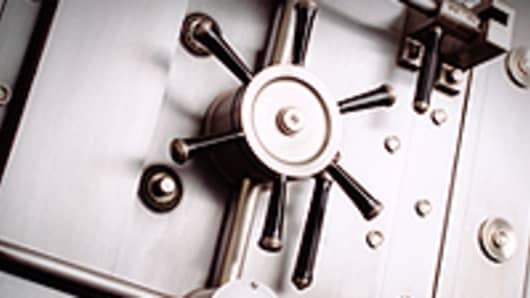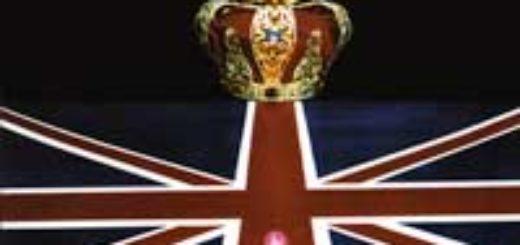The Money Junkies of the Federal Reserve; Isn’t It Time to Audit & Reign In These Addicts? Collect Their Bail-Out Money And Return it To Taxpayer?
NET NET: PROMOTING INNOVATION AND MANAGING CHANGE
The Size of the Bank Bailout: $29 Trillion
John Carney | @carneyPublished 5:29 PM ET Wed, 14 Dec 2011CNBC.com

So this guy from (let’s say) Morgan Stanley walks into a bar.
He orders drink after drink. Downs a dozen or so high-quality glasses of Scotch. Does a few shots of tequila. Maybe grabs a beer at the end of the night.
The bar manager sees the condition the guy is in, takes a look at his tab. Sees the total amount of drinks he’s been served. Grabs the bartender aside and asks him a question.
“Bartender Ben, how many drinks did you serve that guy?”
“Just one,” Bartender Ben says.
“Ben! Be straight with me. I’m looking at his tab. Scotches. Shots of Jurado Tequila. A pint of Six Point. You served him a lot more than one drink,” the manager says.
“You’re looking at it wrong, my friend. You are adding up all the drinks I served him over the whole night. But at any one time, I only served him one drink,” Bartender Ben explains.
Just then the guy from Morgan Stanley looks up. His glass is empty again. “Bartender,” he says. “I’ll have a another.”
“See,” says bartender Ben. “Just one at a time.”
Quite obviously Bartender Ben’s position is absurd.
But something like this position was on display last week when the Federal Reserve criticized reports claiming that the total size of its emergency facilities was $7.77 trillion. The Fed argued that these reports overstated the size of the facilities because they added up all the loans extended despite the fact that many were short term loans that we simply rolled over. According to the Fed, the best thing to do is look at the total amount outstanding at one one time, which was just $1.7 trillion.
Just like the guy who only had one drink…at a time.
The counter to this is that the need to keep borrowing under what are supposed to be short term facilities shows just how badly financial institutions were faring during the financial crisis.
“The amount of overnight lending reflects how broken our financial system really is. A well capitalized, moderately leveraged system does not require this massive liquidity from a central bank — interbank lending should be sufficient. What the data reveals is that the financial sector remains dangerously under-capitalized and overleveraged,” Barry Ritholz writes at the Big Picture.
Recently, a pair of PhD students at the University of Missouri-Kansas City tried to assess the total size of the Fed’s commitments—not just loans made, but asset purchases as well. The bottom line: a Federal Reserve bailout commitment in excess of $29 trillion.
That figure has, in turn, been criticized by economist James Hamilton who argued, incredibly, that the Fed’s bailout commitment under one facility was zero because all the money was paid back.
From an email sent to monetary theorist and Fed critic Randall Wray:
“Felkerson [one of the UM-KC students] takes the gross new lending under the Term Auction Facility each week from 2007 to 2010 and adds these numbers together to arrive at a cumulative total that comes to $3.8 trillion. To make the number sound big, of course you want to count only the money going out and pay no attention to the rate at which it is coming back in. If instead you were to take the net new lending under the TAF each week over this period– that is, subtract each week’s loan repayment from that week’s new loan issue– and add those net loan amounts together across all weeks, you would arrive at a cumulative total that equals exactly zero. The number is zero because every loan was repaid, and there are no loans currently outstanding under this program. But zero isn’t quite as fun a number with which to try to rouse the rabble.”
Just like our drunk guy from Morgan Stanley. He never drank a drop. Because at the end of the night his glass was empty.
Wray on why this is nonsense.
But in fact, the Fed lent “overnight” on a chronic basis to our liquidity chugging banks because they could not fund themselves in markets at the interest rate they desired. So the Fed “accommodated” by pouring the cheap whiskey over and over and over—for weeks, months, even years on end. To get a measure of this chronic abuse of overnight lender-of-last-resort facilities it does make sense to add up across the loans.
That is a far better measure of the extent of the Fed’s efforts to bail out troubled banks—who should be expected to fund themselves in markets, not at the lender-of-last-resort!
In other words, these big numbers are real and they really matter.
It’s not just rabble rousing populism to point out that the Fed went far beyond its role as a lender of last resort or a provider of short term liquidity. And the only way to really show this is to show the cumulative totals.
In other words, to show the bar tab.
Even if the hypothetical drunk guy pays his bill in total, he still got served all those drinks.
Comment: It’s Your Tax Money From Your Hard Labor They’re Stealing and When Your Pensions Are to be Paid There Won’t Be ANY Money to Pay You. They have stolen it all and hidden it away in their Tax Exempt Foundations in the Cayman Islands and in Hillary’s Case–$1.9 BILLION in Qatar.
Questions? Comments? Email us atNetNet@cnbc.com
Follow John on Twitter @ twitter.com/Carney
Follow NetNet on Twitter @ twitter.com/CNBCnetnet
Facebook us @ www.facebook.com/NetNetCNBC

John CarneySenior Editor, CNBC.comby TaboolaMORE FROM CNBC












